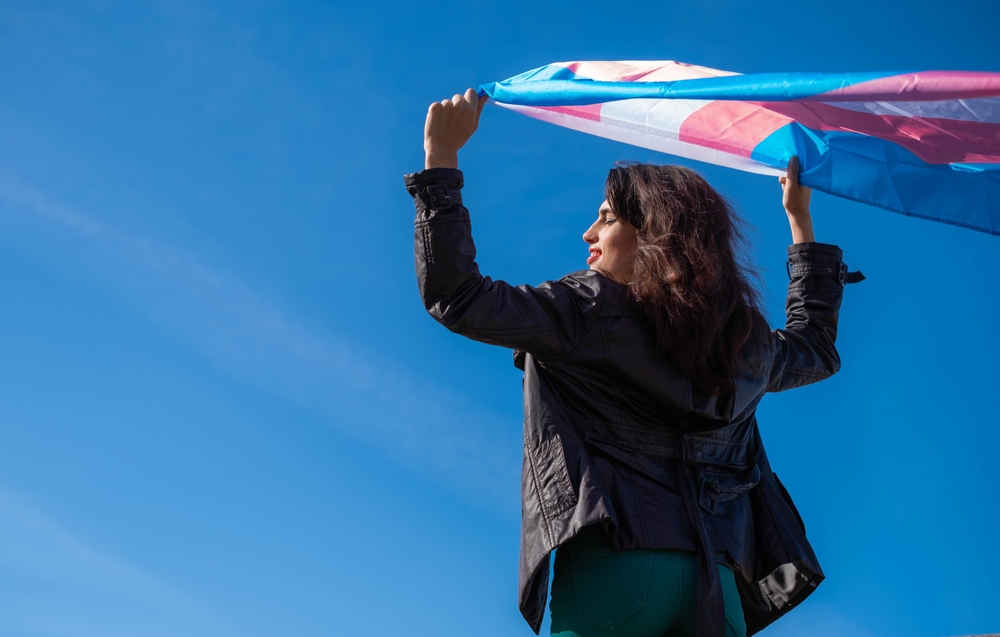Your cart is currently empty!
Supreme Court rules trans women are NOT legally women

Imagine a world where the definition of womanhood is no longer universally understood, but rather a point of fierce legal contention. The recent Supreme Court ruling that trans women are not legally recognized as women has stirred up intense debate, touching on everything from personal identity to the access trans individuals have to spaces reserved for biological women. It’s a decision that raises profound questions: How do legal definitions shape our daily lives, and what happens when the law refuses to acknowledge a group’s lived reality?
For many, this ruling represents a significant setback in the fight for transgender rights, while others argue it’s a necessary clarification of gender and biological sex. With transgender women’s access to single-sex spaces at stake, this landmark decision has far-reaching implications—both legally and socially. But what does it mean for the future of gender recognition, and where do we go from here?

The Ruling: What the Supreme Court Decided
The recent Supreme Court ruling that trans women are not legally considered women represents a significant moment in the intersection of law, identity, and gender. The Court’s decision hinges on a strict interpretation of the word “woman” as defined by biological sex, rather than gender identity. The legal reasoning follows that laws distinguishing between men and women were initially designed to protect biological females in spaces where their safety or privacy could be at risk, and this definition remains rooted in biology. In other words, the Court’s ruling reflects an unwavering stance on keeping gender identity and biological sex separate in legal terms, a decision that is likely to set a precedent for future cases related to transgender rights.
This ruling specifically impacts transgender women in their quest to access spaces that were traditionally reserved for biological women, such as bathrooms, shelters, and sports teams. The Court’s refusal to extend legal recognition to trans women based on gender identity creates a legal vacuum that excludes them from some basic protections under the law. The decision not only disregards the lived realities of transgender women but also signals a division between legal definitions and the evolving understanding of gender in society. While the ruling is limited to one case, its broader implications have sparked a wide-reaching debate about the legal system’s role in defining gender, particularly in areas where gender identity intersects with biological sex.
As societal views on gender continue to evolve, the legal system is left grappling with an outdated framework that often fails to reflect the diverse ways in which people experience and express their gender. The Court’s ruling exemplifies this struggle, as it seeks to hold onto a traditional binary understanding of gender that does not account for the fluidity and complexity of modern gender identities. For transgender women, this decision means that they are excluded from a legal definition of womanhood, which in turn affects their rights to participate in public life as equal citizens.

Legal and Social Debate Surrounding Gender and Identity
The Supreme Court’s ruling has ignited an intense debate about how gender should be understood within the law, reflecting the deep divisions that exist in society over issues of gender identity. On one hand, advocates for transgender rights argue that this decision is a direct assault on the rights and dignity of transgender individuals, especially trans women, by dismissing their gender identity as irrelevant in legal terms. They contend that a person’s gender identity is fundamental to who they are, and denying trans women the right to be recognized as women in the eyes of the law perpetuates discrimination, violence, and inequality. Furthermore, transgender advocates argue that gender identity should take precedence in laws that pertain to personal privacy, safety, and access to services, as it is a more accurate representation of an individual’s lived experience.
Conversely, supporters of the ruling maintain that the legal distinction between biological males and females serves important societal purposes, particularly when it comes to ensuring privacy and safety for women in sex-segregated spaces. For example, they argue that women’s shelters and restrooms are meant to protect biological women from potential harm, and that admitting transgender women into these spaces could compromise their safety. These supporters often stress that legal definitions of sex are not meant to be punitive, but rather are intended to safeguard the interests of individuals based on biological realities. This viewpoint advocates for the protection of spaces where biological women might feel vulnerable, and highlights concerns over how policy changes could impact their experiences in these areas.
As the debate over gender identity and the law deepens, legal scholars, human rights organizations, and the public will continue to wrestle with the question of whether the law should align more with traditional understandings of sex and gender or adapt to recognize the complexity of gender identity in a modern context. The ruling forces society to confront this divide, bringing to light the different perspectives on what constitutes fairness, equality, and safety in a world that is increasingly embracing gender diversity. These conversations are likely to evolve in the coming years, as the fight for transgender rights pushes to redefine what it means to be a woman in the legal and social landscape.

Transgender Rights: A Struggle for Legal Recognition and Equality
Transgender rights have been at the forefront of legal and social activism for decades, but this ruling underscores just how far the movement still has to go in securing full legal recognition for transgender individuals. In the context of the broader transgender rights movement, this ruling is another chapter in the ongoing struggle for equality, where the concept of gender is constantly being questioned, reevaluated, and redefined. Transgender individuals—especially trans women—have long fought for legal protections that honor their gender identity and allow them to live free from discrimination. However, despite significant progress in areas like marriage equality and workplace protections, the legal recognition of transgender people remains inconsistent and fragmented.
In the United States, transgender individuals continue to face significant hurdles when it comes to legal protections, with laws varying widely from state to state. Some states have passed inclusive laws that protect gender identity in areas like healthcare, education, and public accommodations, while others have resisted or passed laws that explicitly restrict transgender rights. This Supreme Court ruling is a stark reminder that while some parts of the country have moved toward greater acceptance of gender identity, the federal government and certain legal frameworks have not kept pace with these changes. As a result, transgender individuals often find themselves navigating a legal system that fails to provide adequate protection and recognition of their rights.
The legal landscape for transgender rights is constantly shifting, and this ruling adds a new layer of complexity to the fight for equality. For transgender women, this ruling not only denies them the legal recognition they deserve but also perpetuates harmful stereotypes and societal stigma that continue to marginalize them. The path forward will require both legal challenges and public discourse to determine how to create a more inclusive legal system that truly recognizes and protects the rights of transgender individuals. Whether through future court cases, legislative reforms, or public awareness campaigns, the fight for transgender equality is far from over.

The Global Context: How Other Countries Handle Gender Recognition
While the U.S. grapples with defining gender in legal terms, other countries around the world are moving towards more inclusive definitions of gender that embrace the complexity of gender identity. In countries like Canada, Argentina, and the UK, legal systems have increasingly recognized gender identity as a valid basis for determining access to sex-segregated spaces and legal documents. In these countries, transgender individuals can legally change their gender on official records without undergoing specific medical procedures, and they are often granted full access to spaces and services based on their gender identity.
For example, in Canada, the law allows individuals to self-identify their gender on official documents such as passports and driver’s licenses, without requiring proof of surgery or medical transition. This approach is grounded in the belief that gender is a deeply personal aspect of identity that cannot always be defined by biology. Similarly, in Argentina, transgender people have the right to change their gender on identification documents without undergoing surgery, a policy that has been hailed as one of the most progressive in the world. These countries, along with others like Malta and New Zealand, are leading the charge in recognizing gender identity as a key component of human dignity and legal equality.
While these progressive moves signal a global trend toward more inclusive policies, the situation in the U.S. remains more contentious. This Supreme Court ruling places the U.S. at odds with many of these international legal advancements, as it reaffirms the idea that legal recognition should be based on biological sex. The contrast between the U.S. and countries like Canada, where gender identity is legally recognized, highlights the ongoing tension between traditional legal frameworks and evolving societal attitudes toward gender. As the debate over gender and law continues, the experiences of other countries may serve as models for how to move toward more inclusive and fair legal systems in the future.

What’s Next for Transgender Rights?
As the legal battle surrounding transgender rights continues, this Supreme Court ruling marks just one chapter in the larger struggle for equality. For transgender women, the ruling is a clear setback, but it also serves as a rallying point for activists and human rights organizations committed to securing full legal recognition for transgender individuals. This decision will undoubtedly lead to more legal challenges, as transgender rights groups push for changes to the law and advocate for broader protections based on gender identity rather than biological sex. The outcome of these challenges will shape the future of transgender rights, particularly in the U.S., where the legal landscape is often at odds with the lived realities of transgender people.
In the coming years, it is likely that this issue will continue to be addressed through both legal and social means. Court cases, state-level legislation, and public opinion shifts will all play a role in determining whether the law can evolve to recognize the rights of transgender individuals more fully. Whether through judicial reforms, new federal legislation, or cultural change, the future of transgender rights hinges on how society chooses to balance the legal recognition of gender identity with the need for fair protections for all individuals.
Ultimately, the fight for transgender equality is not only about legal victories—it is about changing societal attitudes toward gender and creating a world where all individuals, regardless of gender identity, can live authentically and without fear of discrimination. As the struggle continues, it is essential for lawmakers, activists, and the public to engage in open, respectful conversations about how to navigate the complexities of gender and ensure that the rights of transgender individuals are fully protected.
